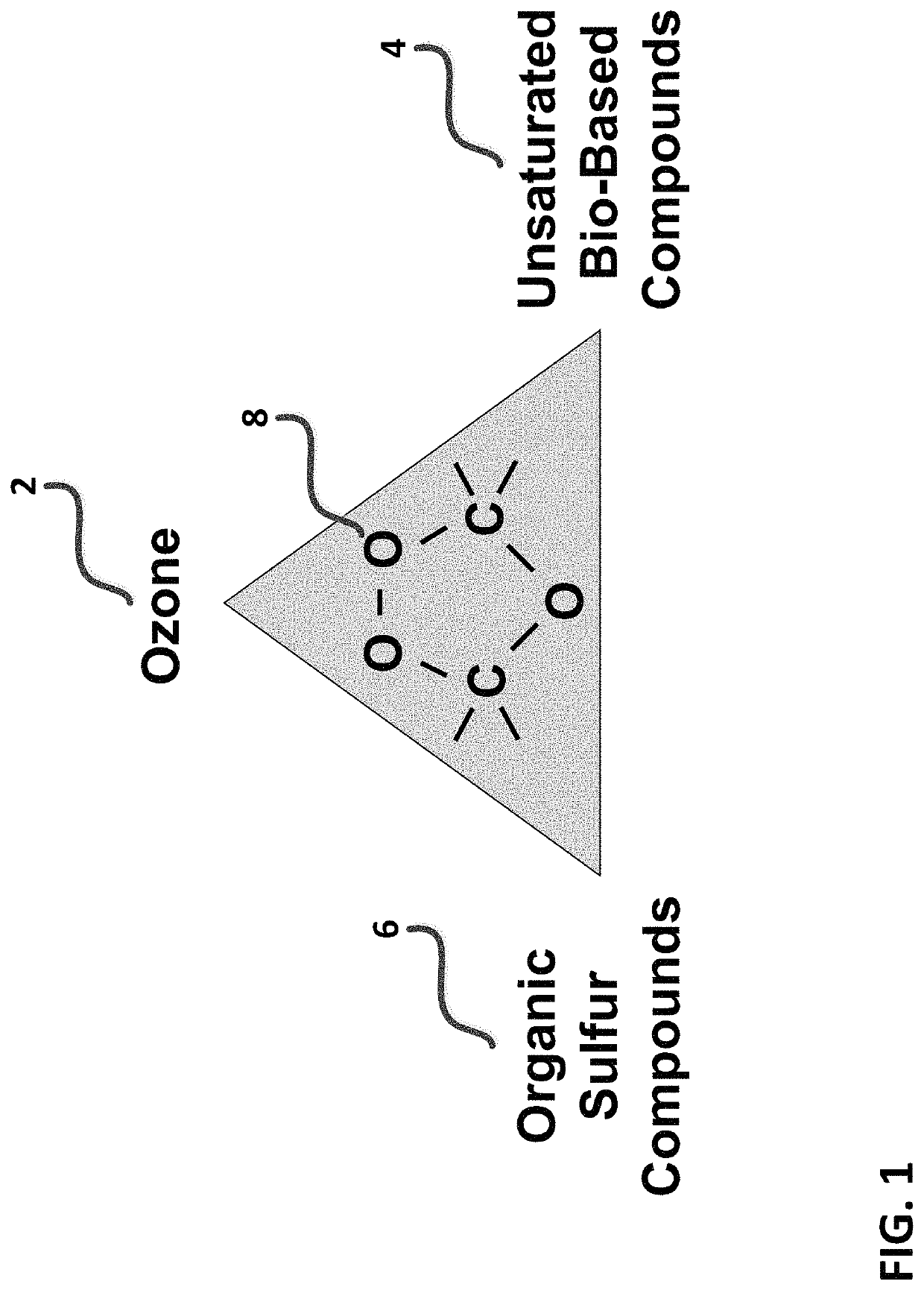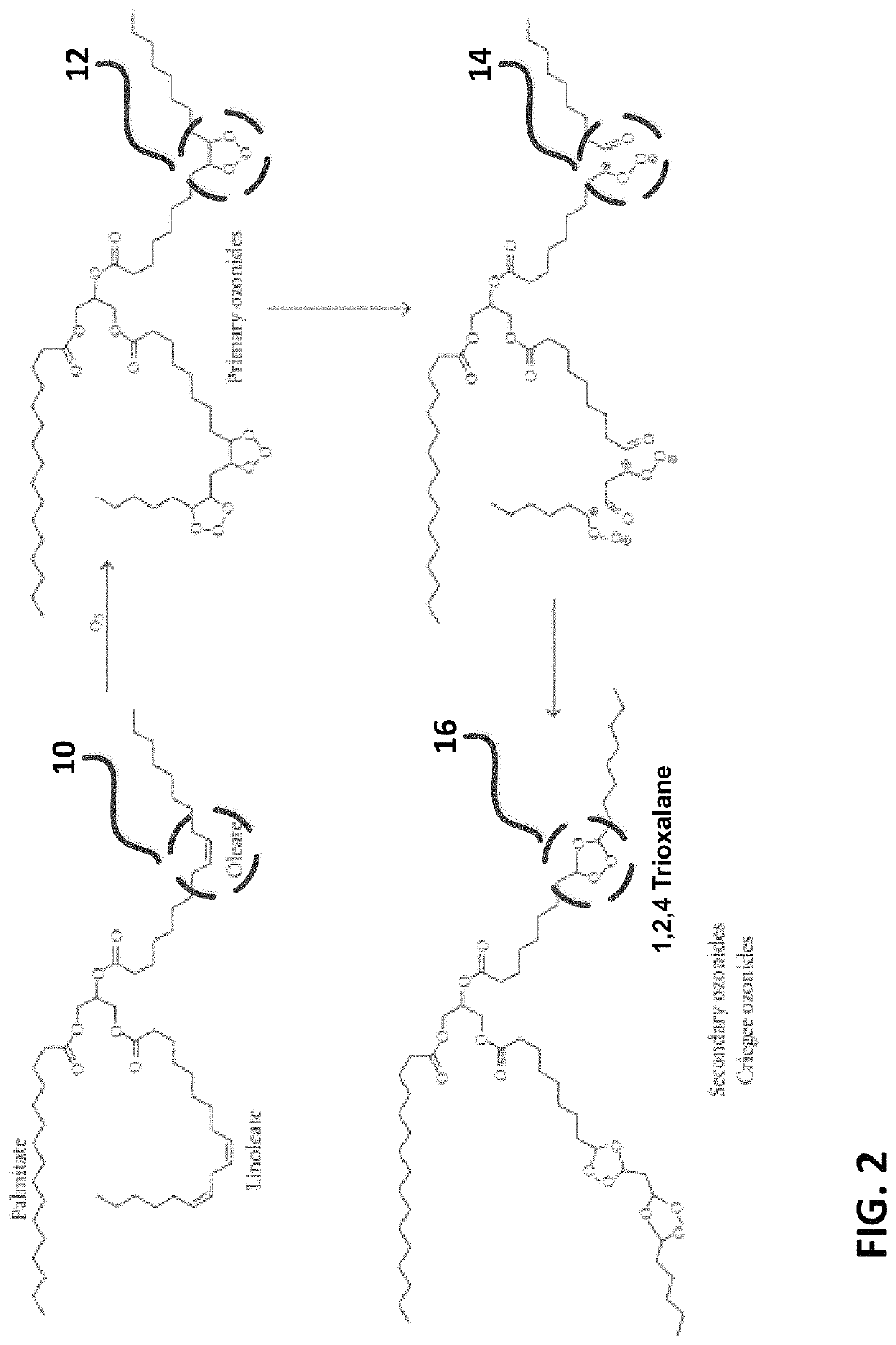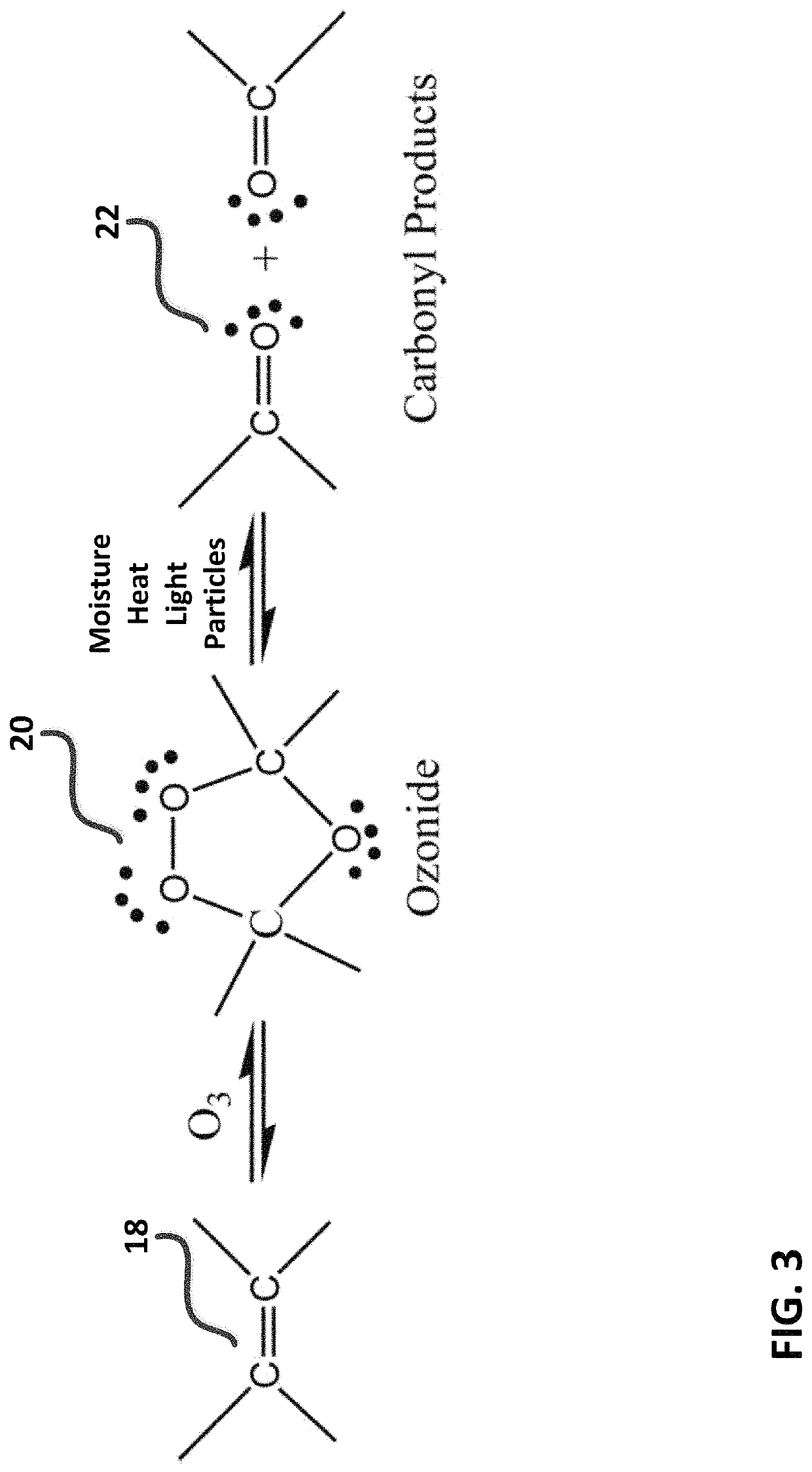Method for forming and applying an oxygenated machining fluid
a technology of machining fluid and oxygenated ozone gas, which is applied in the direction of lubricant composition, metal-working machine components, manufacturing tools, etc., can solve the problems of not being able to use ozone gas directly as an additive, not being able to achieve the attractive option of utilizing ozone gas as an additive, and not being able to meet the requirements of machining conventional lubricant formulations, etc., to achieve the effect of increasing flow, reducing charg
- Summary
- Abstract
- Description
- Claims
- Application Information
AI Technical Summary
Benefits of technology
Problems solved by technology
Method used
Image
Examples
Embodiment Construction
[0058]FIG. 1 is a diagram depicting a generalized oxygenated machining fluid composition triangle. Referring to FIG. 1, exemplary compositions generated in-situ and applied in accordance with the present invention comprise combinations of ozone (2) and unsaturated bio-based compounds (4), and optionally organic sulfur compounds (6) as extreme pressure adjuncts, to form exemplary functional groups such as trioxalane (8) derived from the reaction of ozone (2) with the carbon-carbon double bonds contained on unsaturated hydrocarbons. Exemplary unsaturated hydrocarbons for use with the present invention are preferably natural or bio-based oils or alcohols. Preferred machining oils may include soybean oil, castor oil, olive oil, rapeseed oil, jatropha oil, corn oil, safflower oil, including commercial machining fluid formulations derived from same, among many others. Preferred machining fluid alcohols comprise long chain alcohols derived from bio-based oils, for example oleyl alcohol and...
PUM
 Login to View More
Login to View More Abstract
Description
Claims
Application Information
 Login to View More
Login to View More - R&D
- Intellectual Property
- Life Sciences
- Materials
- Tech Scout
- Unparalleled Data Quality
- Higher Quality Content
- 60% Fewer Hallucinations
Browse by: Latest US Patents, China's latest patents, Technical Efficacy Thesaurus, Application Domain, Technology Topic, Popular Technical Reports.
© 2025 PatSnap. All rights reserved.Legal|Privacy policy|Modern Slavery Act Transparency Statement|Sitemap|About US| Contact US: help@patsnap.com



